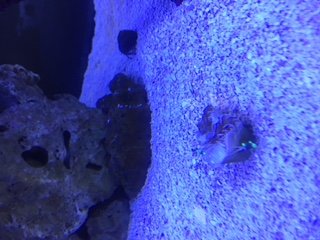ScuderiaDavis
New member
So last weekend I bought a nice green torch. For the first few days it was doing fine. I decided to move it to where it would have more room to grown.
After that day, I noticed it started to "wilt" a little. Then each day after that, I would notice some of the heads on the bottom of the sand floor. Then yesterday, it's all gone.
I'm not sure if something is eating it or it is just dying. I would think that if it were dying, it would have been slower and more remains, but as you can see, it's GONE.
Parameters
no amonia/nitrite
ph of around 8
nitrates range from 10-20 max
4 green chromis/ 1 flame angel, 1 yellow tang, 1 blue hippo tang, 1 diamond goby, 1 cleaner shrimp.
Thoughts?
After that day, I noticed it started to "wilt" a little. Then each day after that, I would notice some of the heads on the bottom of the sand floor. Then yesterday, it's all gone.
I'm not sure if something is eating it or it is just dying. I would think that if it were dying, it would have been slower and more remains, but as you can see, it's GONE.
Parameters
no amonia/nitrite
ph of around 8
nitrates range from 10-20 max
4 green chromis/ 1 flame angel, 1 yellow tang, 1 blue hippo tang, 1 diamond goby, 1 cleaner shrimp.
Thoughts?

